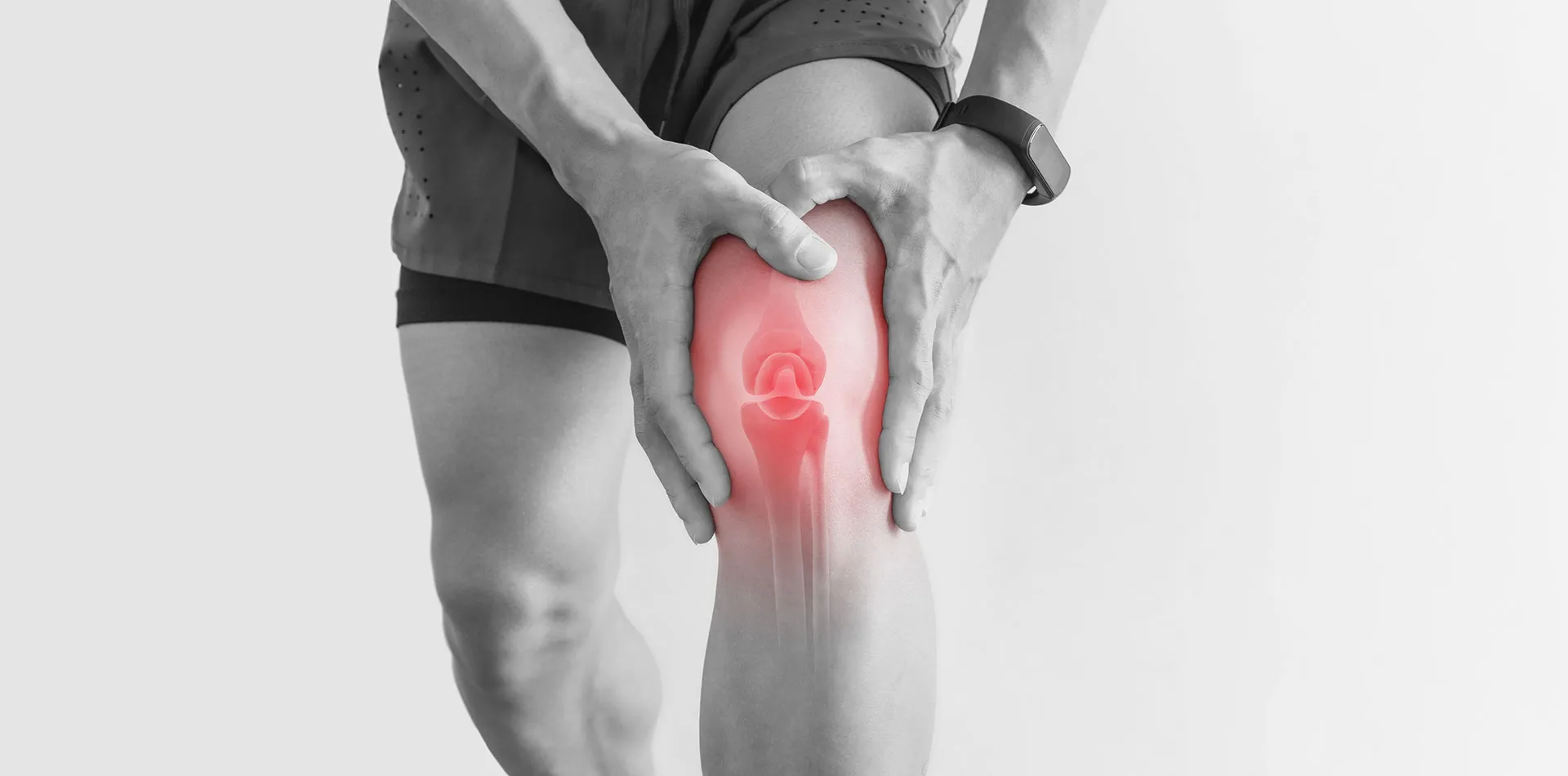
Knee pain may occur to people of all ages, resulting from an injury, like a ruptured ligament or torn cartilage, or medical conditions such as arthritis, gout and infections.
Self-care measures, physical therapy and knee braces may help relieve minor knee pains; however, in some critical conditions, surgical repair is needed.
The reason for knee pain will determine the location and severity of the condition, and its symptoms can range from redness and warmth to the touch, swelling and stiffness, weakness or imbalance, popping or crunching noises, and failure to fully straighten the knee.
Visit the doctor when you cannot carry the weight on your knee or feel your knee is unstable or gives out, have knee swelling or cannot extend or flex your knee fully. Also, when there is an obvious deformity in the leg or knee, you have a fever and redness, pain, and swelling in the knee or severe knee pain caused by an injury.
Knee pain can occur due to injuries, mechanical problems, various kinds of arthritis and other issues.
A knee injury can hit any of the ligaments, tendons or fluid-filled sacs (bursae) surrounding the knee joint and the bones, cartilage and ligaments that form the joint itself.
The everyday occurences of knee injuries include:
• ACL injury, common in people that play basketball, soccer or other sports where sudden changes in direction happen. The ACL injury can tear the anterior cruciate ligament (ACL), one of four ligaments that join the shinbone to the thighbone.
• Fractures in the knee bones, including the kneecap (patella), may occur during falls or auto accidents. Even prolonged osteoporosis may weaken bones causing a knee fracture simply by taking a wrong step.
• Torn meniscus (rubbery cartilage between your shinbone and thighbone) may happen due to a twist in the knee while bearing weight on it.
• Patellar tendinitis induces irritation and inflammation of one or more tendons, usually happens to runners, skiers, cyclists, and people involved in jumping sports and activities.
Mechanical problems can also cause knee pain with conditions like:
• Damage or degeneration of bone or cartilage can make a piece of bone or cartilage break off and float within the joint space, which may sometimes move and interfere with knee joint movement.
• Iliotibial band syndrome usually occurs to distance runners and cyclists when the tough band of tissue tightens and rubs against the outer part of the thighbone.
• Dislocated kneecap happens when the triangular bone covering the front of your knee (patella) slips out of place or stay displaced.
• A hip or foot pain can affect walking and may place extra stress on the knee joint and cause knee pain.
With over 100 different kinds of arthritis, some that affect the knee include:
• Osteoarthritis, also known as degenerative arthritis, causes wear-and-tear conditions in the cartilage in your knee, worsening use and age.
• Rheumatoid arthritis is a debilitating condition affecting every joint in the body, including your knees, and the severity of this condition may vary.
• Gout occurs when uric acid crystals grow up in the joint, mainly affects the big toe but can happen in the knee.
• Pseudogout occurs due to calcium-containing crystals that develop in the joint fluid, primarily affecting the knee joints.
• Septic arthritis extensively affects the knee cartilage, causing swelling, pain and redness along with a fever; talk to your doctor right away if these symptoms are seen.
Patellofemoral pain syndrome is the pain that happens between the kneecap and the underlying thighbone, commonly seen in athletes and young adults for those whose kneecap doesn't track properly in its groove and have developed arthritis.
Knee problems increases due to:
• Being overweight or obese often stresses the knee joints, even during ordinary activities like walking or going up and downstairs. It also raises the risk of osteoarthritis by accelerating the breakdown of joint cartilage.
• Lack of muscle flexibility or strength may increase the risk of knee injuries.
• Certain sports or occupations or sports like Alpine skiing with its rigid ski boots and potential for falls, basketball's jumps can increase the risk of a knee injury. Also, jobs that need repetitive stress on the knees, as in construction or farming, can raise the risk.
• A past knee injury can increase the risk of knee injury again.
All knee pain may not be severe, but specific knee injuries and medical conditions, like osteoarthritis, joint damage and disability, may get serious when left untreated.
You can prevent knee pain and joint deterioration with the following:
• Get rid of extra pounds and manage a healthy weight as it helps ease the strain on the joints, lessening the risk of injuries and osteoarthritis.
• Be active in sport play and gradually prepare your muscles for the demands of sports participation.
• Get strong but stay flexible as weak muscles cause knee injuries. Workout with balance and stability training to build up your quadriceps and hamstrings, the muscles on the front and behind your thighs help support your knees.
• Be smart about exercise as osteoarthritis, chronic knee pain, or recurring injuries can adversely affect your condition. Try alternates like swimming, water aerobics or other low-impact activities, limiting high-impact activities.
Patient Experience